-
Getting Started with Rails 7 Episode 24: Use ActionText for Rich Text Content
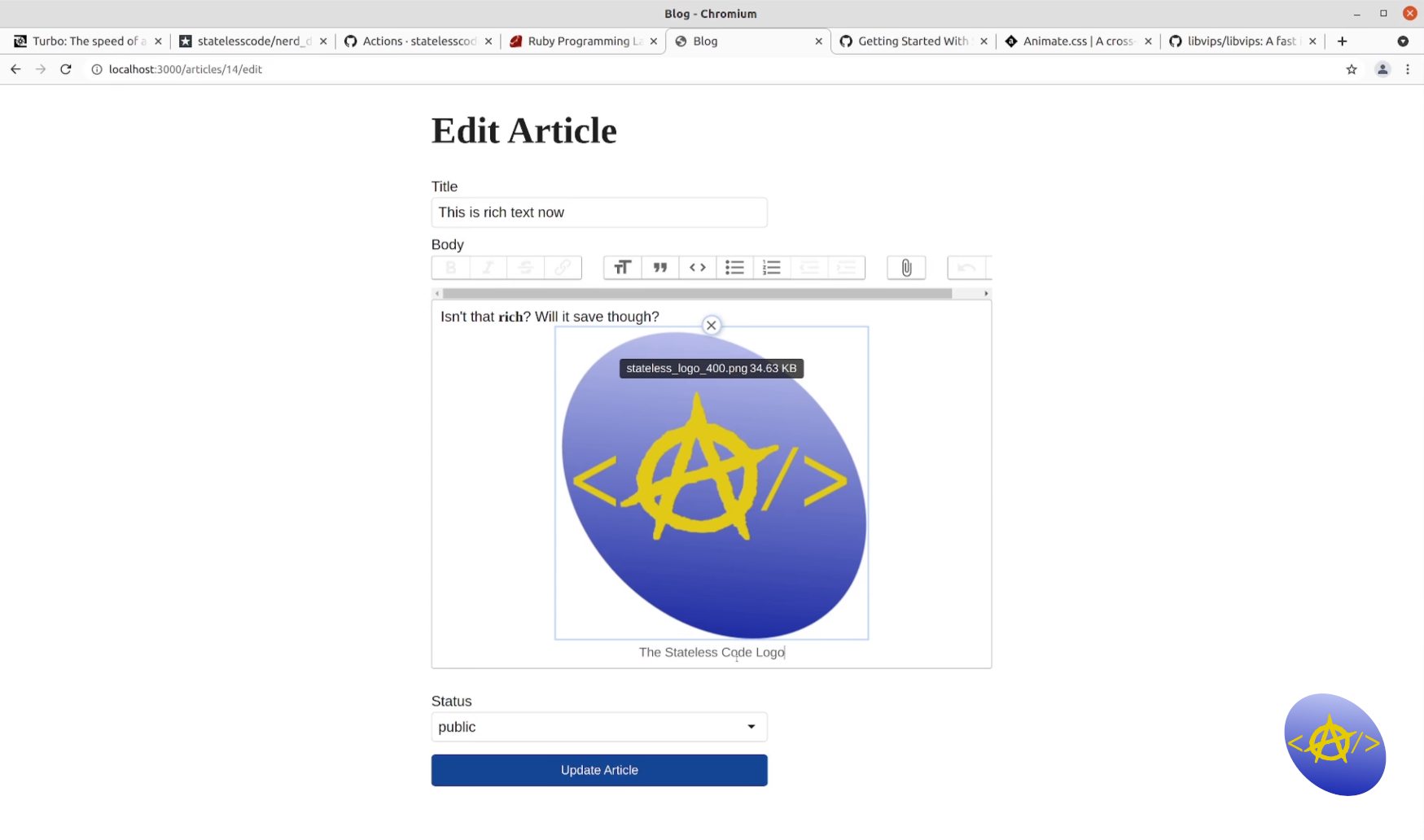
This is the 24th video in the Getting Started with Rails 7 series. In this video Mike installs Rails ActionText. By default, this uses the Trix editor and Rails ActiveStorage to allow for “what I see is what I get” (WISIWIG) editing and display of a field. Mike installs the prerequisites, installs ActionText, and runs…
-
Getting Started with Rails 7 Episode 22: Broadcast Comment Changes to the Article with Turbo
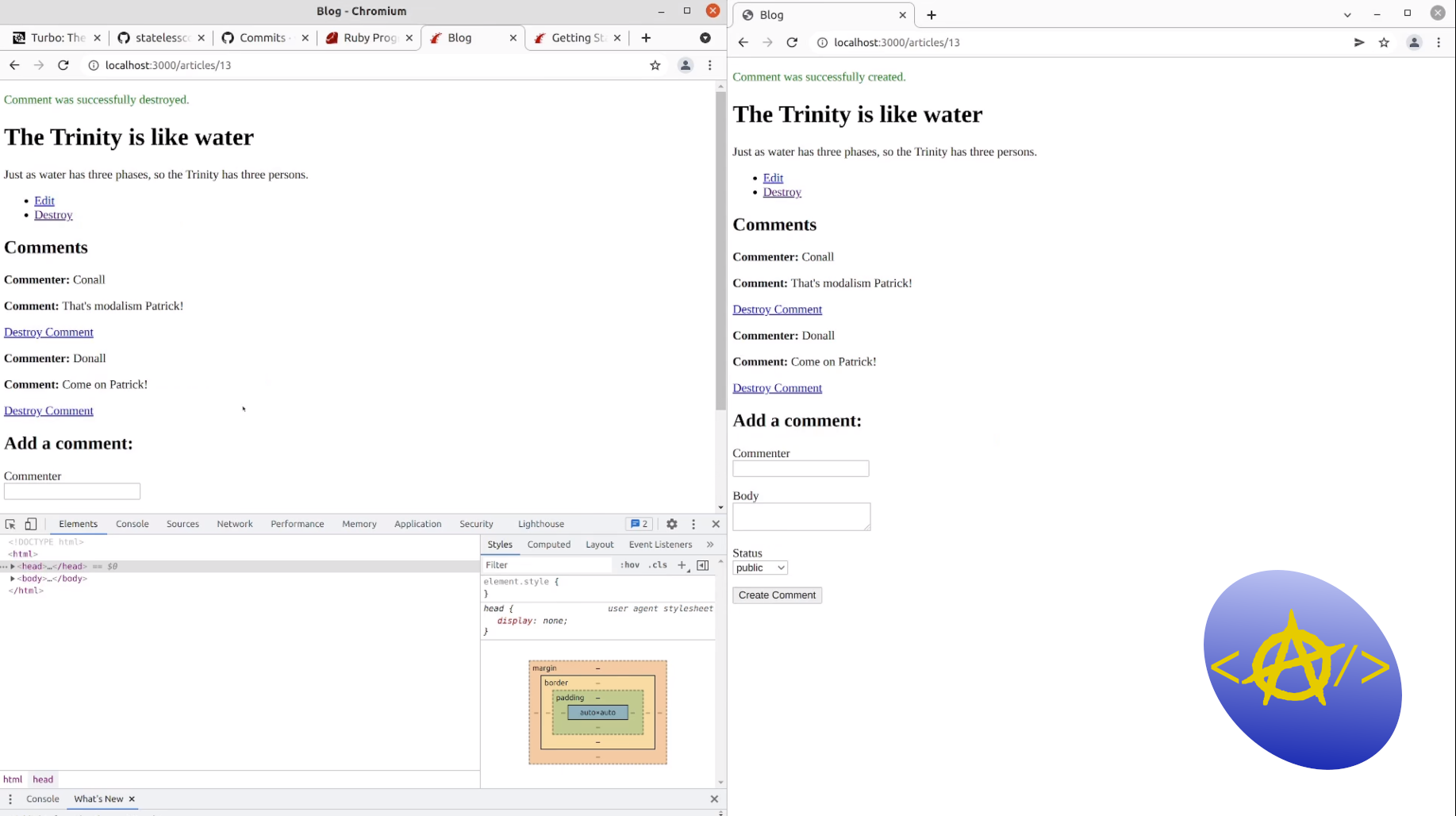
This is the 22nd video in the Getting Started with Rails 7 series. In this video Mike uses Turbo Streams from the Hotwire front-end framework (included by default in new Rails applications) to broadcast changes (create, update, destroy) to the collection of comments for an article in real-time. In order for the Turbo broadcast to…
-
Getting Started with Rails 7 Episode 17: Refactor Tests
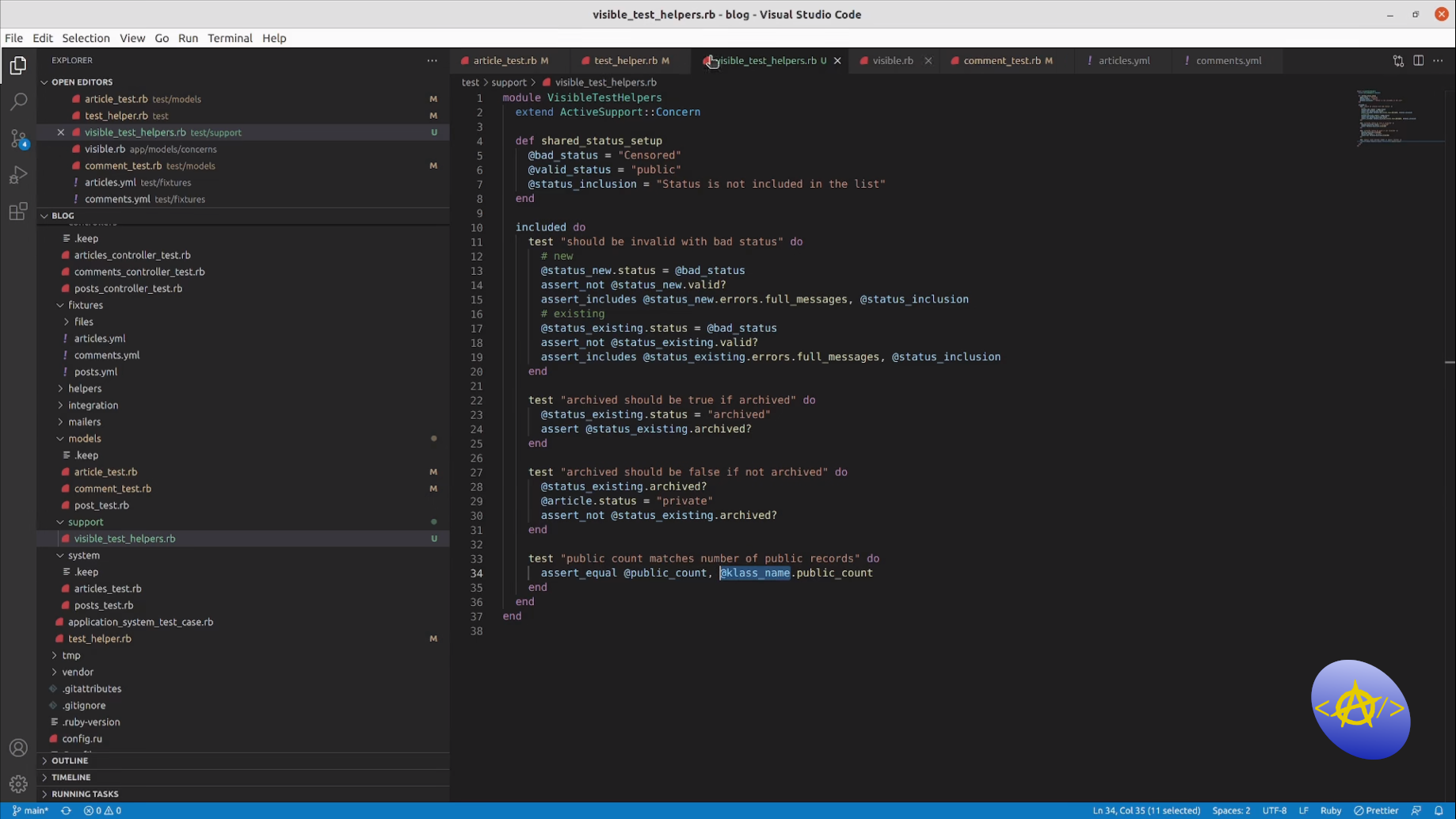
This is the 17th video in the Getting Started with Rails 7 series. In this video Mike refactors the existing tests to move shared tests between models to a helper module that both test classes include. In addition, he creates a method to test that all fixtures are valid for each model. After that, he…
-
Codecast: Getting Started with Rails 7 Episode 16: Refactor Repeated Code Using Concerns
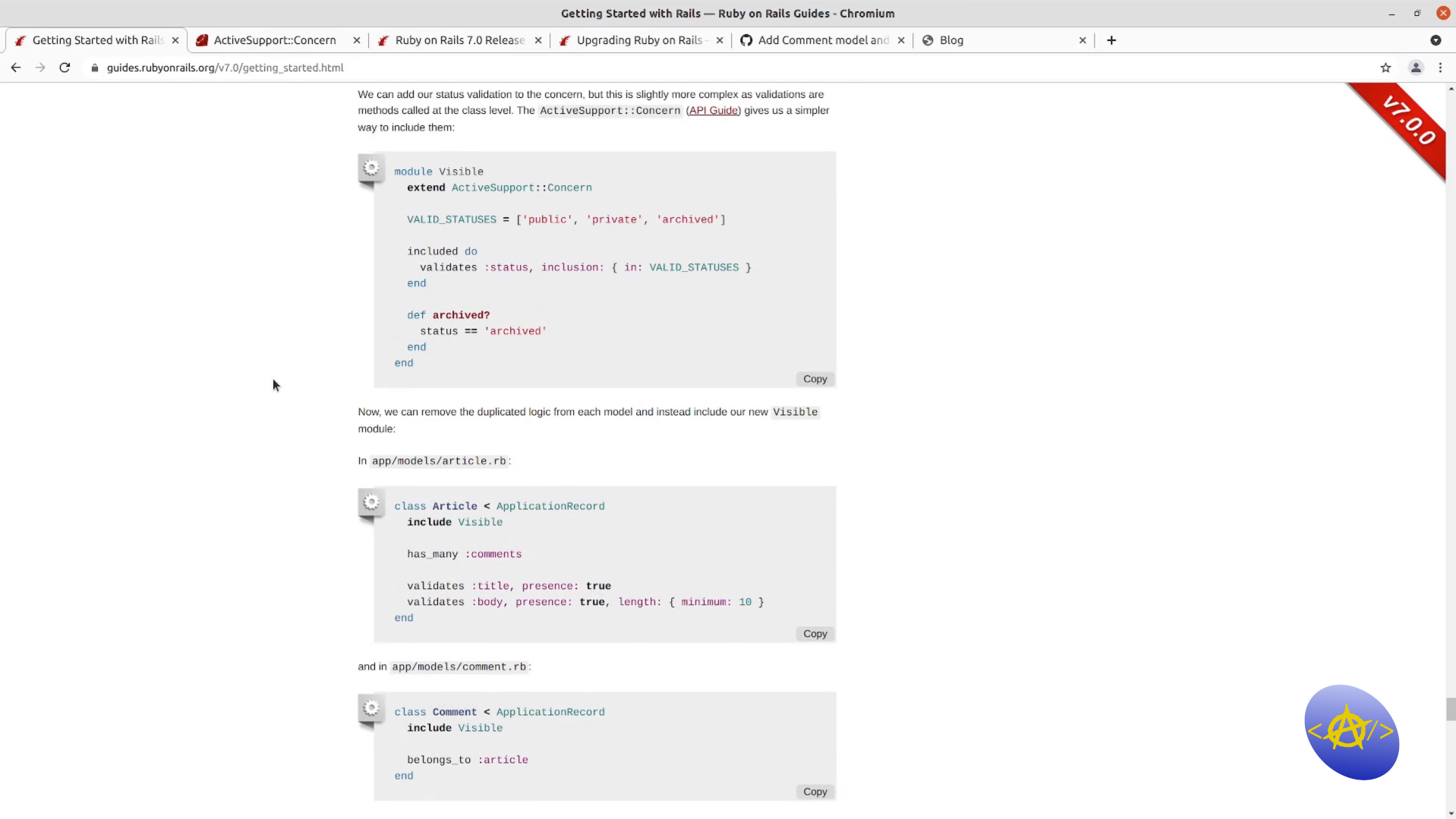
This is the 16th video in the Getting Started with Rails 7 series. In this video Mike refactors the code written in the last video into a module called Visible that extends ActiveSupport::Concern. This module becomes the new home for the status-related code for both articles and comments. The two models both include the Visible…
-
Getting Started with Rails 7 Episode 15: Prepare for Concerns
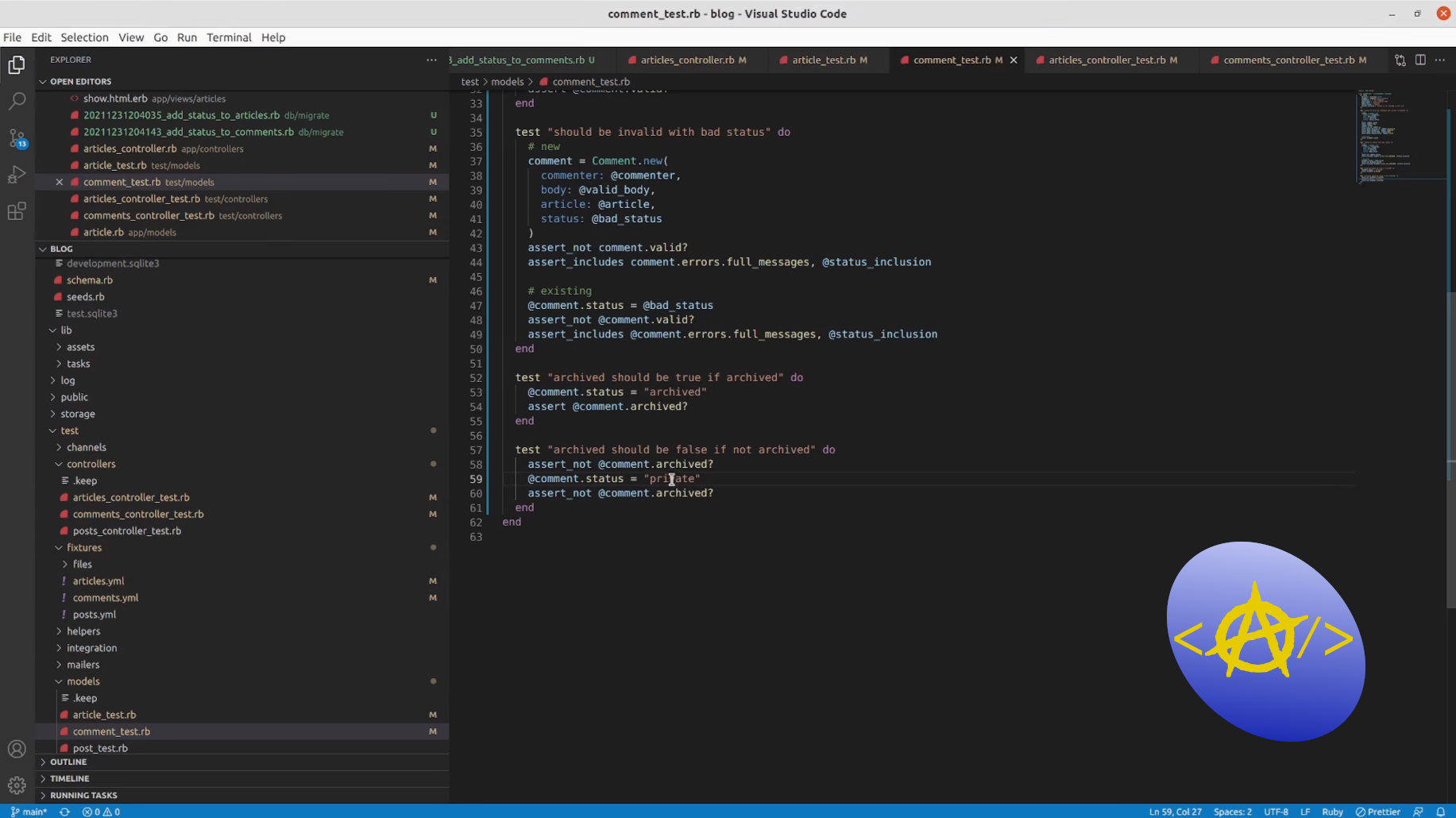
This is the 15th video in the Getting Started with Rails 7 series. In this video Mike provides an overview of modules, mixins, and concerns. Then he sets up a status field that has duplicated functionality between the Article and the Comment. In this episode he gets everything set up and working so that he…
-
Getting Started with Rails 7 Episode 12: Add a Model and Route for Comments
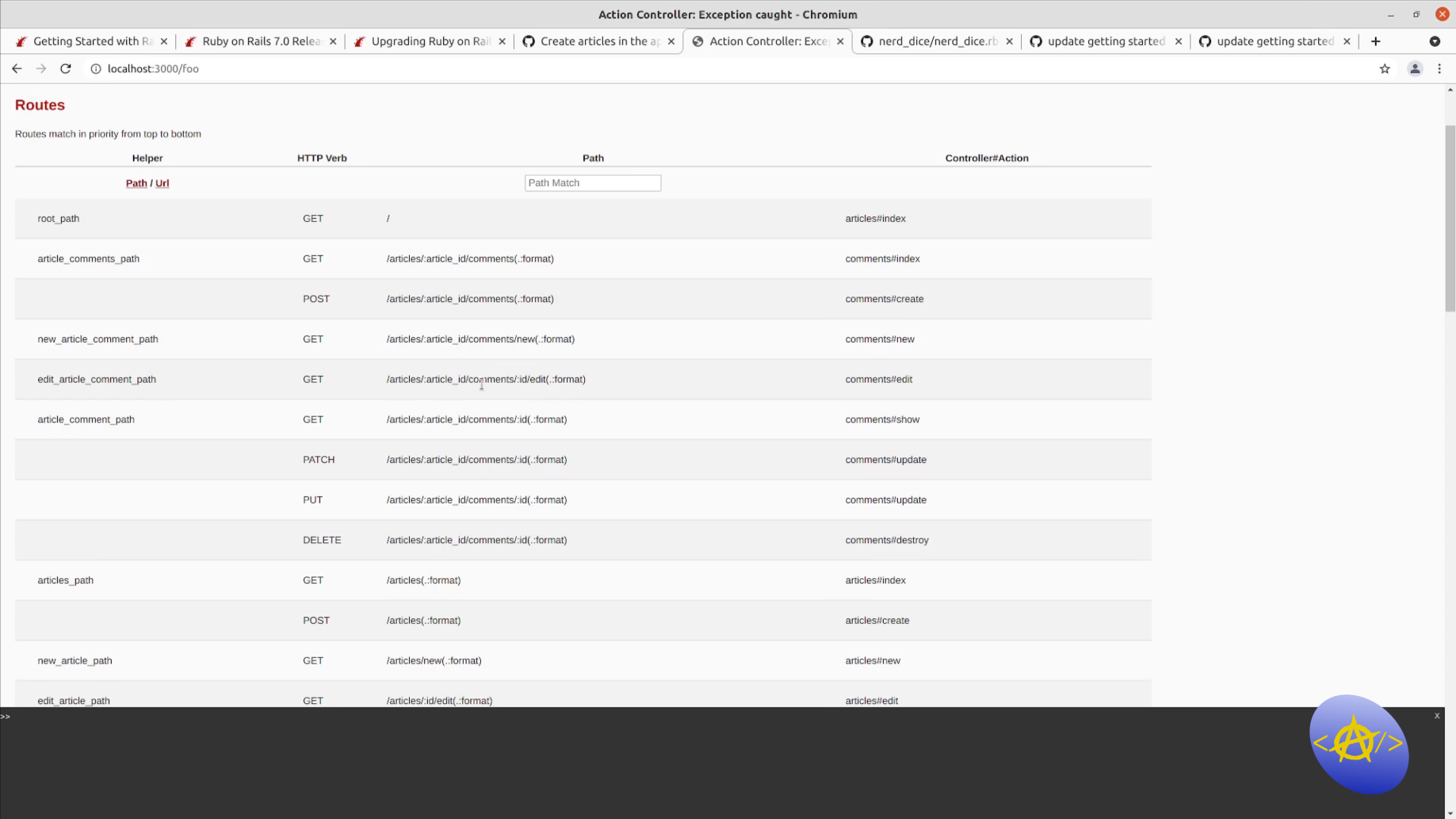
This is the 12th video in the Getting Started with Rails 7 series. In this video Mike uses the Rails model generator to generate a model for comments on articles. He reviews the generated code, tweaks a couple of associations, customizes the fixtures, adds a nested route for comments. At the end, he re-runs the…
-
Codecast: Getting Started with Rails 7 Episode 11: Use a Scaffold Generator to Quickly Produce a Resource
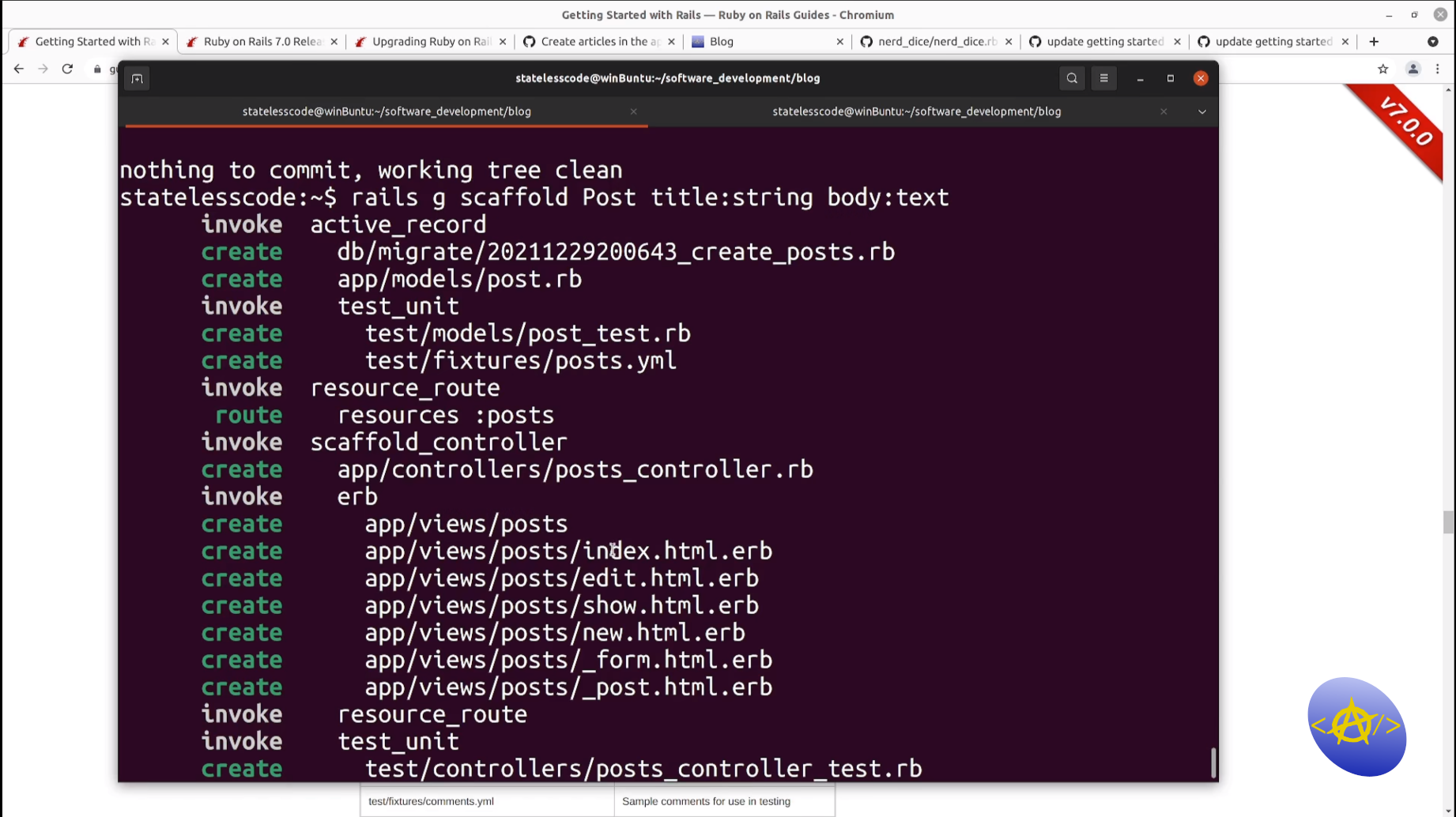
“Do you mean to tell me that we could have done all the work from the previous ten videos in half an hour?!” Yes. (But the purpose of the Getting Started with Rails guide is education, so it slowed things down, added them in incrementally, and explained them.) This is the 11th video in the…
-
Getting Started with Rails 7 Episode 8: Model Validations and Form Error Messages
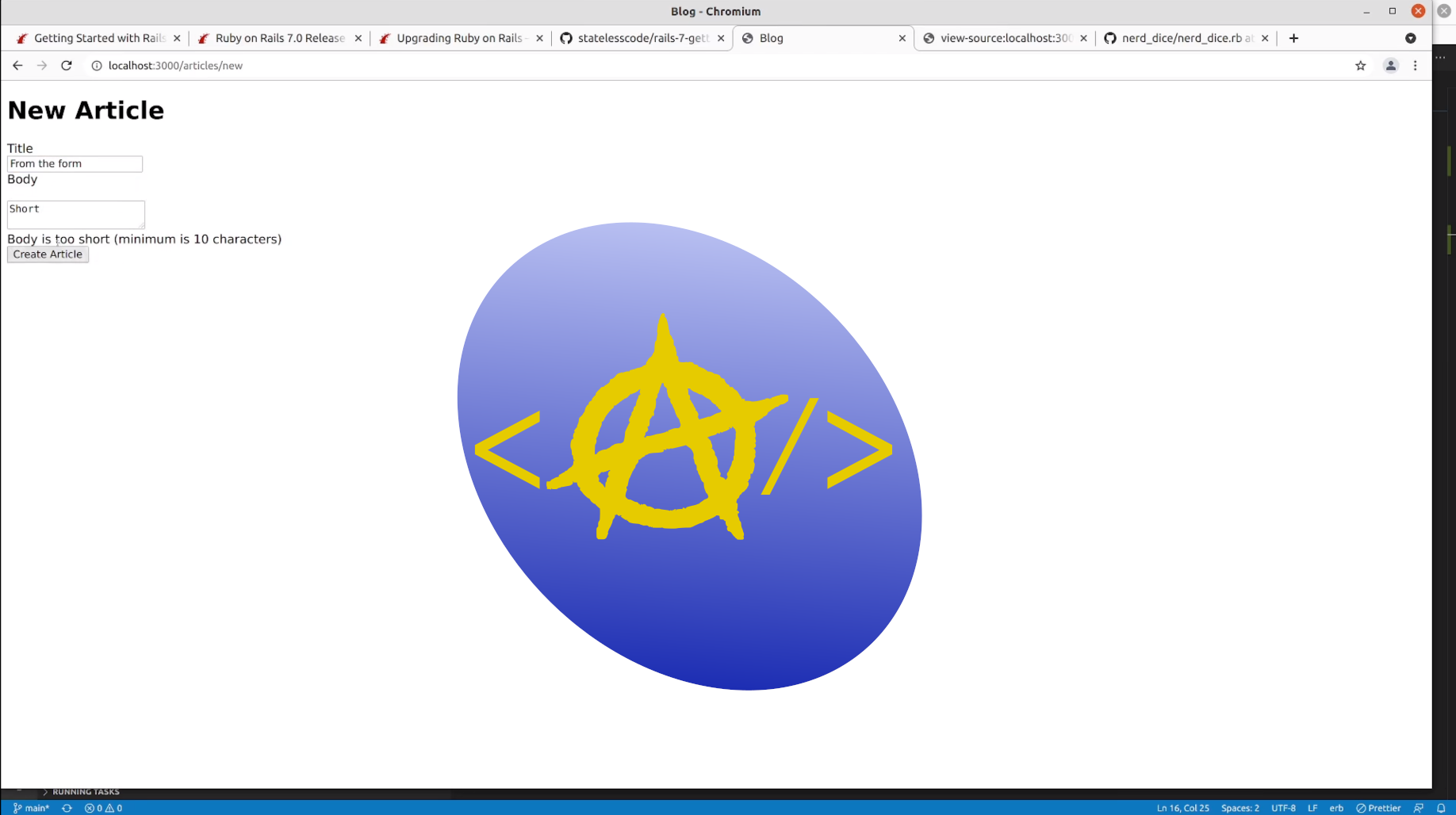
This is the 8th video in the Getting Started with Rails 7 series. In this video Mike demonstrates that you can currently create an Article record with an empty title and body. In order to solve the problem, he uses Rails model validations to ensure the data for the Article record is in good order…
-
Getting Started with Rails 7 Episode 4: Model CRUD in the Rails Console and Listing Articles
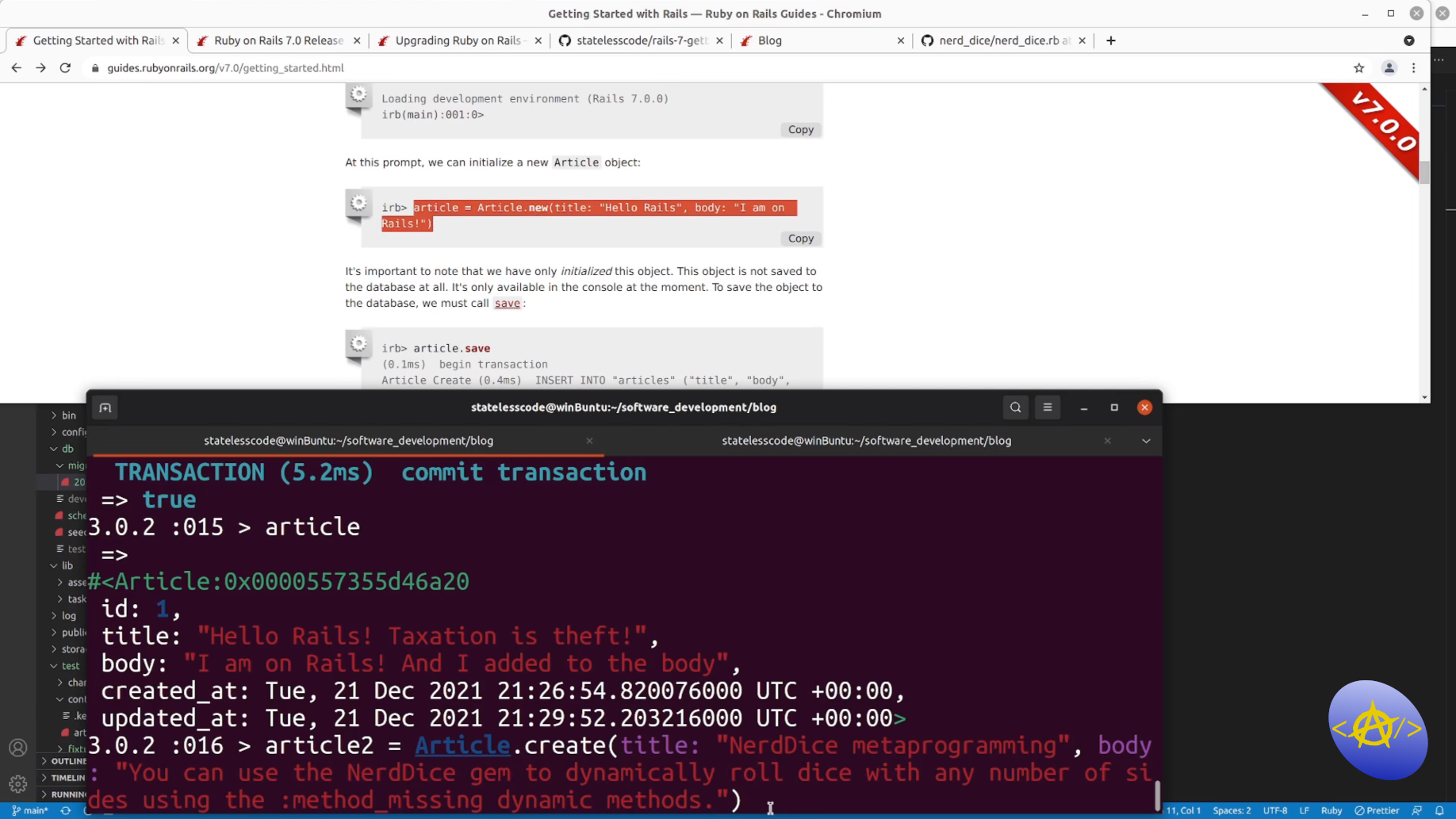
This is the 4th video in the Getting Started with Rails 7 series. In this video Mike explores the Rails console with the Article model and the ability to Create, Read, Update, and Destroy (CRUD) Article records in the console. After that he takes a quick look at the Rails database console, customizes some Rails…
-
Getting Started with Rails 7 Episode 3: Autoloading, Generate and Migrate a Model
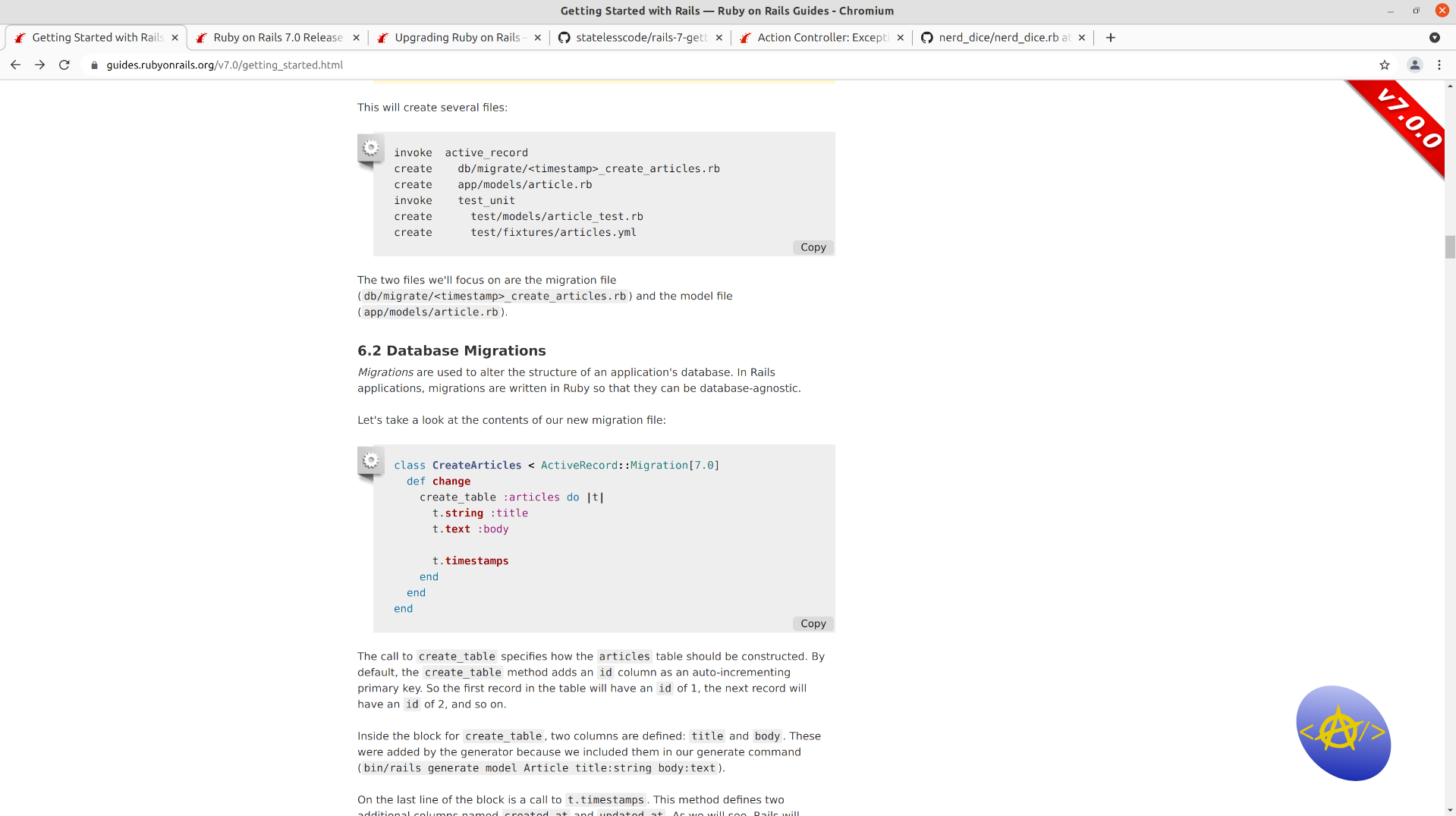
This is the 3rd video in the Getting Started with Rails 7 series. In this video Mike reviews the Autoloading section of the Getting Started with Rails guide and compares it to the NerdDice RubyGem project. Then he creates the Article model and explores the resulting Rails migration, the errors that occur when you have…